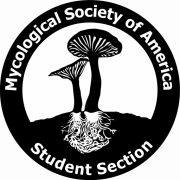November student spotlight:

Heather Slinn is a PhD candidate at the University of Guelph and originally from Ottawa, Ontario, Canada. She is currently working in the labs of Drs. Jonathan Newman and Lee Dyer. Her current project focuses on understanding the natural history of the interactions between plants and their seed dispersers which are critical for terrestrial communities. Seed dispersers can have profound impacts on plant fitness and plant community composition by transporting seeds away from parent plants to maximize offspring success or providing the necessary conditions to trigger germination through scarification. However, it is not known how passage through dispersers’ guts affect seed fungal communities. Ecological filters that alter fungal community assemblages can affect plant fitness by providing chemical defense against antagonists and increasing germination. For instance, chemically mediated mutualistic interactions, where fungi and associated defensive compounds are passed from parent to offspring through the seed coat, have been well documented in temperate systems (e.g., this occurs in cool season grasses). In the tropics, much less is understood about these interactions. Heather’s research seeks to identify changes to the seed fungal community of Piper sancti-felicis (Piperaceae) after passage through bat guts. Piper is the same plant genus that the common spice, black pepper comes from. Her research evaluates the antifungal properties of an important class of secondary metabolites (alkenylphenols). This is extracted from fruit to assess whether is acts as a filter for fungal colonization prior to dispersal.
When she finishes her PhD, Heather would like to continue her work as a postdoc investigating fungal mediated interactions in Piper. She is hoping to graduate in 2 years.
What is your favorite fungus and why?
Cordyceps because it is awesome at infecting the brains of arthropods and manipulating behavior.
What is your favorite fact/thing about fungi?
Fungi make an extraordinary diversity of secondary metabolites that play all sorts of important ecological functions, but also serve critical roles in pharmacy (e.g. taxol) and other biotechnology. We understand such a small percentage of this diversity, there is huge application potential.
Who is your mycology role model?
I don’t have a single role model, but there are many women that I admire. Posy Busby at Oregon State, Betsy Arnold at the University of Arizona and Sue Hartley at York University in the UK. I met Sue at ESA a couple of years ago when I was giving a poster presentation on plant-insect interactions. She asked me what I was thinking about doing next, and I told her about my new work on fungi in Piper. Her eyes lit up in excitement and I looked down at her name tag and I got really excited because I hadn’t recognized her.
Any great stories from field work?
I nearly set La Selva Biological Station on fire once. Faulty drying oven. I’m still not sure who put that fire out. There is no alarm system. I also found a juvenile Terciopelo in my room. They are one of the most venomous vipers in Latin America. I repeated that story to tourists at the station. They looked terrified.
What do you like to do in your free time? What are your hobbies?
Running, biking, reading, working on my Spanish, joking around as much as possible and drinking wine (Malbec is my favorite).
What are you passionate about?
I am passionate about promoting and supporting minorities in STEM. If you’d like to follow me for this, my handle is @h_slinn.
December student spotlight:

Jacob Golan is a PhD candidate at the University of Wisconsin-Madison, originally from Long Island, NY. He is currently working in the lab of Dr. Anne Pringle, where his research focuses on how fungi move – from across landscapes to across continents. He approaches questions regarding dispersal from a biophysical, genetic, genomic, and ecological perspective in order to better understand fungal biogeography and population dynamics. He is also interested in the intersection of microbial biology and intellectual property rights. During his time as a graduate student, Jacob has received several awards, including the NSF GRFP and the Chateaubriand Fellowship in Science, Technology, Engineering, Mathematics & Biology-Health (STEM). After completing his PhD, Jacob would like to go to law school and eventually work in legal academia on the intersection of microbial biotechnology and intellectual property rights
What is your favorite fungus and why?
Hemileia vastatrix is one of the coolest! Putative transoceanic dispersal + coffee = amazing!
What is your favorite fact/thing about fungi?
Supposedly fungi won the American revolution…according to some, the British fleet was overrun by Serpula lacrymans
Who is your mycology role model?
Tie between Rytas Vilgalys and Anne Pringle
Any great stories from field work (funny/interesting/something that stuck out to you)?
If editing manuscripts counts as field work, then I enjoyed editing my first chapter with my advisor in the bathroom of a former post-doc’s house. We needed a quiet space and we were down to the last minute.
What do you like to do in your free time? What are your hobbies?
I really like to read and to learn languages. Russian literature is by far my favorite
What are you passionate about?
I love working with undergraduates – it’s a great way to get extra help with your research and also to practice your teaching skills


Leave a Reply